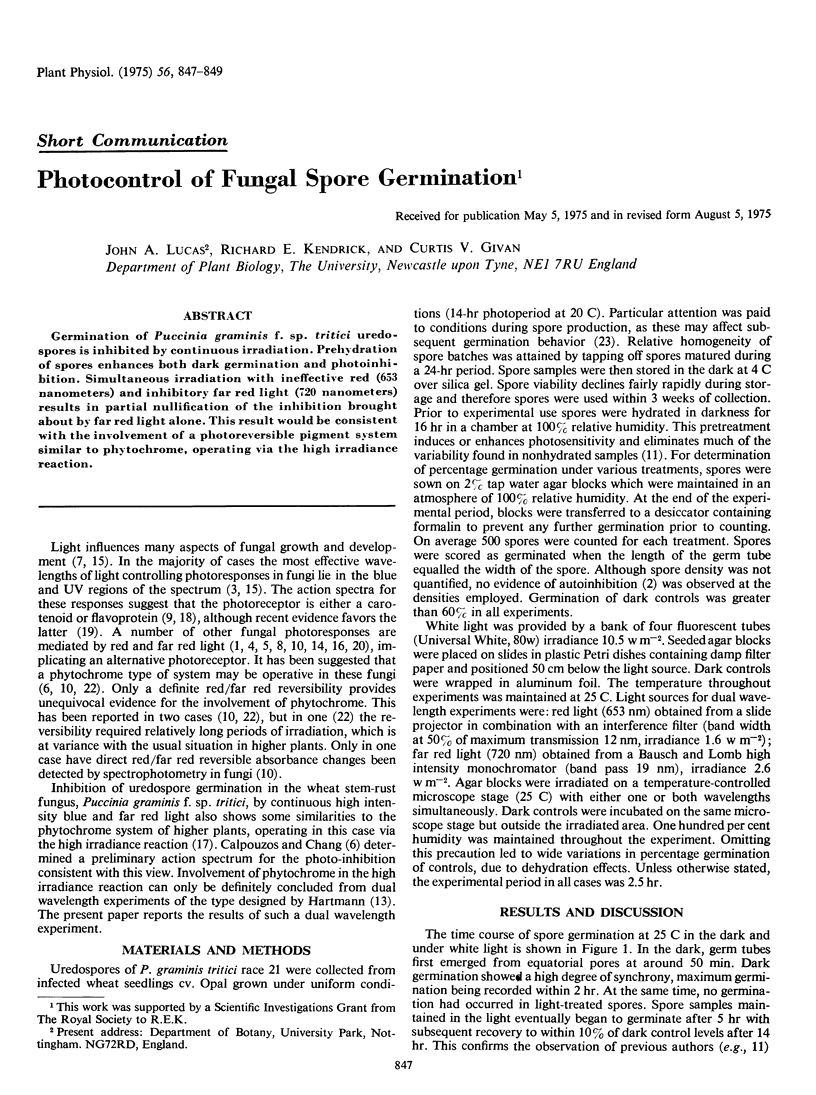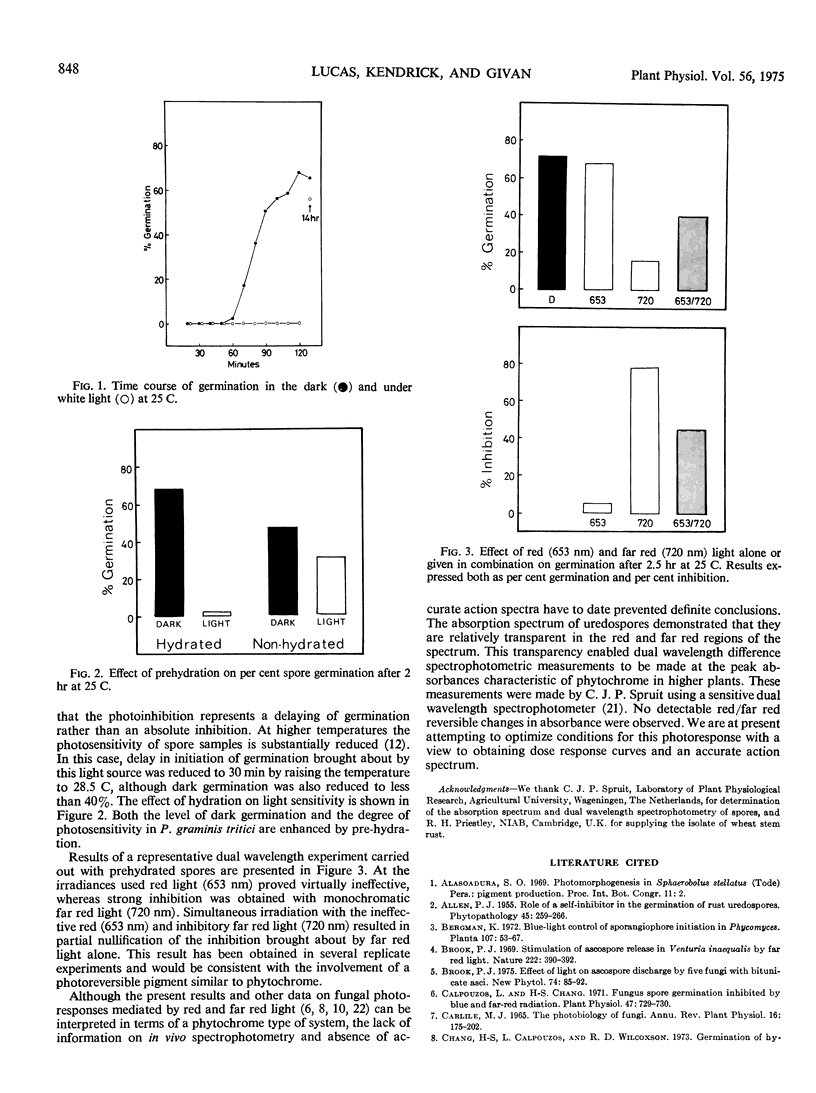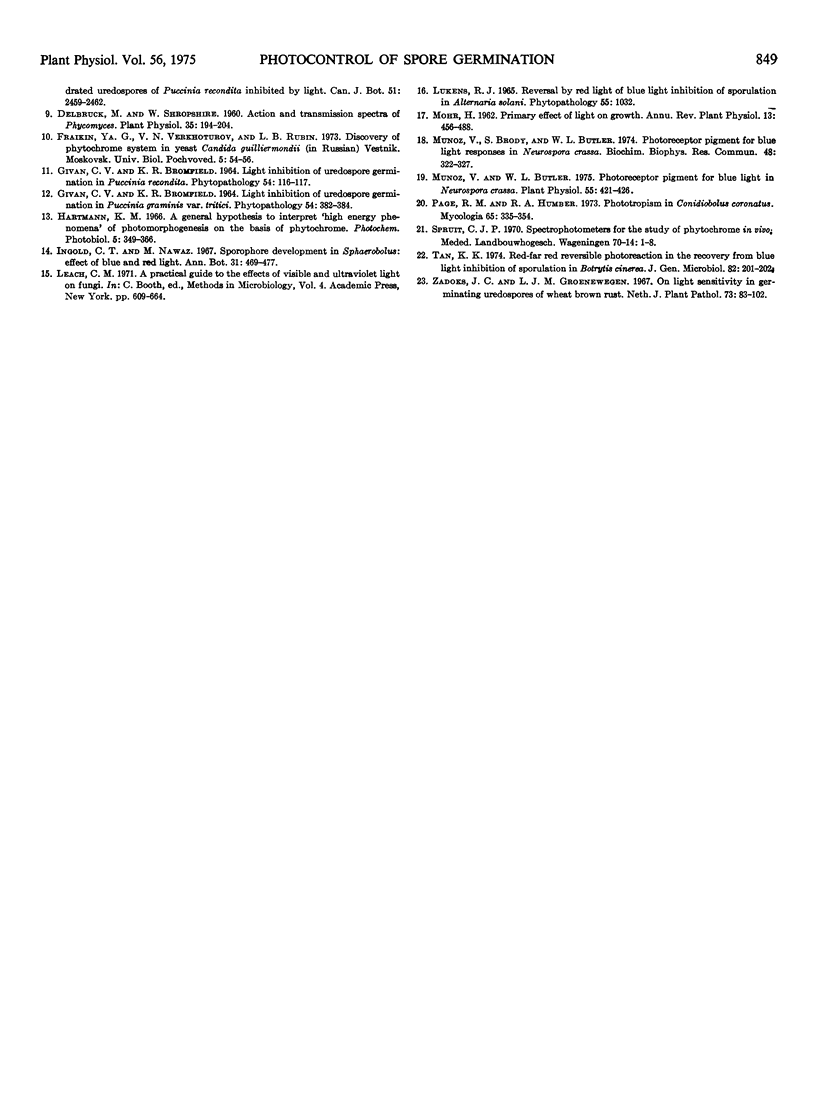Abstract
Germination of Puccinia graminis f. sp. tritici uredospores is inhibited by continuous irradiation. Prehydration of spores enhances both dark germination and photoinhibition. Simultaneous irradiation with ineffective red (653 nanometers) and inhibitory far red light (720 nanometers) results in partial nullification of the inhibition brought about by far red light alone. This result would be consistent with the involveent of a photoreversible pigment system similar to phytochrome, operating via the high irradiance reaction.
Full text
PDF


Selected References
These references are in PubMed. This may not be the complete list of references from this article.
- Calpouzos L., Chang H. S. Fungus spore germination inhibited by blue and far red radiation. Plant Physiol. 1971 May;47(5):729–730. doi: 10.1104/pp.47.5.729. [DOI] [PMC free article] [PubMed] [Google Scholar]
- Delbrück M., Shropshire W. Action and Transmission Spectra of Phycomyces. Plant Physiol. 1960 Mar;35(2):194–204. doi: 10.1104/pp.35.2.194. [DOI] [PMC free article] [PubMed] [Google Scholar]
- Muñoz V., Brody S., Butler W. L. Photoreceptor pigment for blue light responses in Neurospora crassa. Biochem Biophys Res Commun. 1974 May 7;58(1):322–327. doi: 10.1016/0006-291x(74)90930-9. [DOI] [PubMed] [Google Scholar]
- Muñoz V., Butler W. L. Photoreceptor Pigment for Blue Light in Neurospora crassa. Plant Physiol. 1975 Feb;55(2):421–426. doi: 10.1104/pp.55.2.421. [DOI] [PMC free article] [PubMed] [Google Scholar]
- Page R. M., Humber R. A. Phototropism in Conidiobolus coronatus. Mycologia. 1973 Mar-Apr;65(2):335–354. [PubMed] [Google Scholar]


